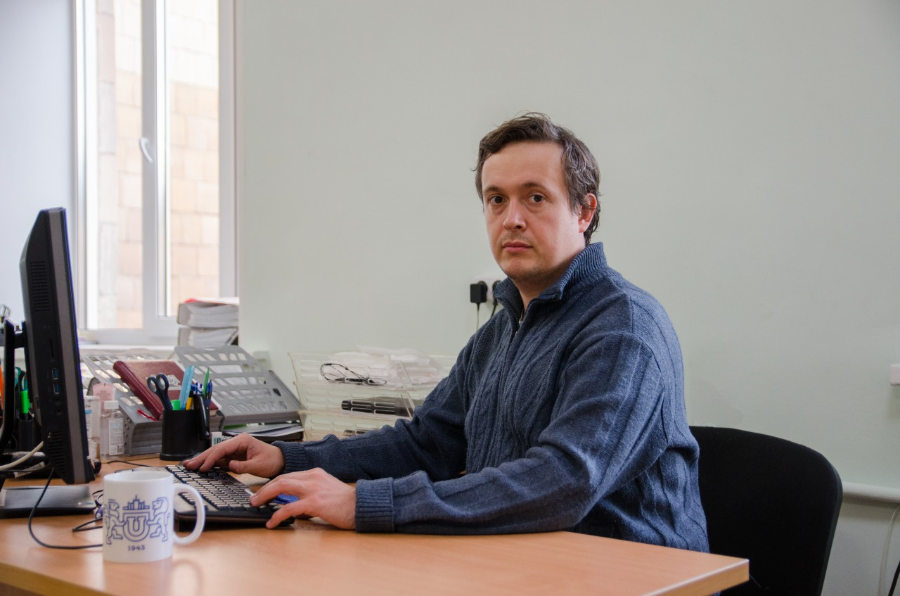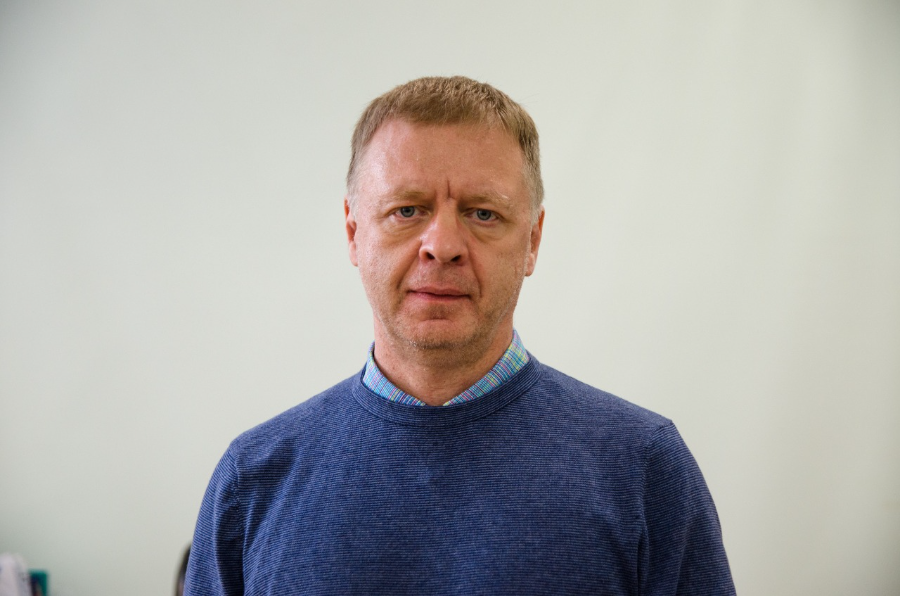A team of young scientists from the Institute of Natural Sciences and Mathematics of South Ural State University, under the guidance of Doctor of Sciences (Physics and Mathematics), Professor Sergei Podoshvedov, have proposed an algorithm of a generator of nonclassical state of light, which is called a "Schrödinger-cat state", of a very large amplitude. This algorithm plays an important role in quantum coupling and quantum computations in the optical field with the use of laser sources. The results of this work have been published in an article in one of the most authoritative scientific journals of the series Nature Scientific Reports (Q1).
Is the Cat Dead or Alive?
The young scientists are conducting interesting research in the field of quantum mechanics at the Laboratory for Quantum Information Processing and Quantum Computing. Candidate of Sciences (Physics and Mathematics), Associate Professor of the Department of Nanoscale Systems Physics Dmitrii Kuts, a postgraduate student Sergei Mikheev, and other scientists have been actively working at the seminars on various fields of quantum mechanics. One of these included the idea of generating nonclassical states of light. The researchers have considered what conditions must be created in order to work with quantum information transmission, and determined the possibility of successful creation of such conditions in reality. This task is of interest both from the fundamental point of view (whether it is at all possible), and from the applied one, since light signals are capable of transmitting quantum information using entangled (coupled) particles. The SUSU scientists have proposed an algorithm of creating such light in which photons are in a Schrödinger-cat state.
In 1935, an Austrian physicist and one of the creators of quantum mechanics Erwin Schrödinger held a thought experiment. He suggested to imagine a cat penned up in a chamber, whose life depends on the decay of a radioactive atom. If the atom decays, a relay goes off and releases a hammer that shatters a flask of poison, and the cat gets poisoned; and if the atom does not decay, the cat remains alive. Once the chamber is opened, the observer can witness only one certain state: "the nucleus decayed, and the cat is dead", or "the nucleus did not decay, and the cat is alive". Before it happens, the hypothetical cat is both dead and alive.
The Schrödinger's illustration describes the main paradox of quantum physics: particles, such as electrons, photons, and even atoms, can exist in two states at the same time. The creation of optical elements with the use of elementary particles for quantum computers is a very promising direction. Though, most likely, a quantum computer will be engineered as based on several physical systems, including the use of optical qubits.
In quantum computations, the Schrödinger-cat state is a special entangled (coupled) state of qubits (quantum bit is the basic unit for information storage in a quantum computer, and it can store a zero, one, a zero and a one simultaneously, or store neither), in which they all are in an equal superposition of all zeros and ones.
"Qubits can be affected by the surrounding environment and, therefore, require reliable computing systems to be used. All of that places very exacting demands to a physical system, on which qubits are based, as well as the quantum gates, which transform the input states of qubits into output states. Different physical systems can be used for different quantum protocols. In particular, since light has the maximum possible propagation velocity and weakly interacts with the surrounding noisy environment, optical systems are placed alongside the atomic ones when developing the possible configurations of a quantum computer," explains Dmitrii Kuts.

Superposition makes quantum computers incredibly powerful. But the very same significantly complicates the computations. The thing is that qubits must not simply maintain their state but also interact with each other. And the situation gets way more complicated when we are talking about the interaction between dozens or hundreds of qubits.
New Steps towards Reaching the Goal
The scientists intend to conduct experiments on creating a determinate source of entangled light, independent of the initial conditions. An on-demand creation of a source of entanglement is a crucial element of the practical implementation of all quantum protocols, including the creation of a quantum computer. It is known that the potential of a quantum computer is to efficiently implement intractable algorithms, such as quickly choosing the right solution out of the available millions, or searching for unsorted data, what cannot be performed efficiently by computers operating on classical laws. But to bring the idea of a quantum computer to life, a multi-purpose set of determinate operations with a large set of qubits must be efficiently performed. The diversity of the possible states of a qubit significantly increases its capacity, and therefore, the potential computational power of a computer.
"As a rule, researchers holding experiments can implement only a very limited number of useful states in practice. An on-demand implementation of a desired quantum state is the key to the operation of quantum states and a large number of various quantum protocols. In essence, a quantum computer is itself a generator of the required output state, the information from which is extracted by means of measurement. The same may also be said of, for instance, a protocol of quantum teleportation of unknown state, or, let's say, of quantum internet. Any progression, be it a new mechanism or a new algorithm in quantum engineering, step by step brings the mankind closer to, probably, our golden dream – creating an efficient quantum computer and making an attempt to peek beyond the bounds of the physical world," shares Sergei Podoshvedov.

Though multiple approaches to optical quantum computers are being proposed, none of those is absolutely satisfactory since they are quite complicated or are limited in application. For instance, the implementation of a simple logic operation would require an unacceptably large number of additional operations. That is why we cannot say that the problem of optical quantum information processing has been solved once and for all; the question of "How to efficiently use the optical resources, interaction mechanisms, and suitable states?" is still an open one. Quantum engineering of states is an unsolved problem of the quantum processing of information.
Such optical states (Schrödinger-cat state) allow to reduce the losses during the quantum processing of information, and they can be created in any environment and with large amplitudes. Nevertheless, a number of problems arise when working with them. For example, these states must be made stable, and quantum operations must be performed very quickly. Scientists all over the world are working on solving these tasks.
Research in digital industry, along with the ecology and materials science, is one of the three priorities of strategic development of scientific and educational activities of South Ural State University.
SUSU is a participant of Project 5-100, which aims at enhancing competitiveness of Russian universities among global leading research and educational centres.




